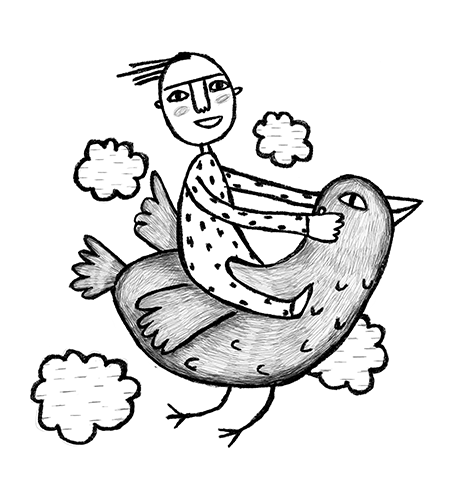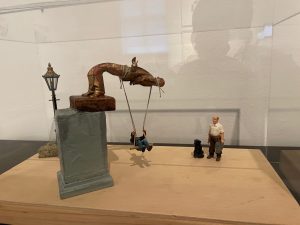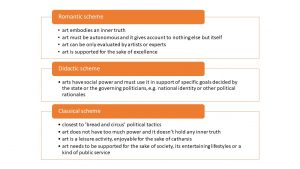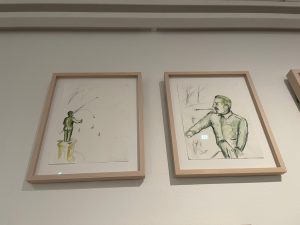Arts Against Autocracy: How Can Cultural Professionals Help Democracy Resist Illiberalism?

How can arts and culture help democracy resist the external forces that push a society toward illiberalism and autocratic rule? What specific role do cultural producers and organizations play and how do they sustain against illiberal political tensions? In what ways can arts and culture systems be used to disseminate and validate democratic principles and values?
These questions resonate in cultural professionals’ minds especially in times of the Russian attack on Ukraine, an example of the extreme consequence of the Russian dictator’s policies and practices. They include not only open violations of human rights, repressions against freedom of speech, and a reign of propaganda, but also instrumentalization of the realm of arts and culture in Russia and abroad.
Arts and politics were discussed in December 2021 in the third episode of COSM Talks open seminars series organized by Humak. The invited guests were international cultural policy and management researchers and teachers. Together with Humak’s Katri Kaalikoski, Pekka Vartiainen, and Marcin Poprawski, they were also involved in the preparation of the Horizon Europe research grant application called ARCUPID (Arts and Culture as Pillars of Democracy) prepared with the University of Zeppelin.
This text is based on the discussion between the participants of the COSM Talks seminar. Read more about the topic in Marcin Poprawski’s blog here.

Art as a Pillar of Healthy Democracy
The use of the “healthy democracy” concept helps us to envision liberal democracy as a dynamic, living system that sustains human society and is sustained by it, in turn. The overarching question is: how can cultural professionals foster and strengthen healthy, democratic dialogue and promote citizen participation, especially in a way that provides for citizen action and oversight of educational, policy, organizational, institutional, legal, and media systems?
The paradox of art is that it can flourish at the same time when pillars of democracy are eroding. However, art is essential to democracy. It invites audiences into perspectives different from their own and helps foster a sense of empathy. It can be a key parameter of freedom and hold a mirror to society and reveal hidden truths. Picasso once said that “art is a lie that makes us realize truth“.
Artists and cultural producers are trying to figure out ways to break the rules, pushing boundaries, and constantly questioning society, and that’s what makes art both uncomfortable and important to illiberal politicians who want to control society. Artists are professional users of imagination: their job is to imagine the future as related to the past.
That imagination can be dangerous to some abstract political constructs that are foreground of autocracy and totalitarian regimes. A government that oppresses art enhances the perception of art as powerful.
Three Schemes of Political Instrumentalization
Let’s think about how governments and political rulers view the arts. There is a triangular perspective explaining that: the romantic, the didactic, and the classical. All of them can, unfortunately, to different extents, instrumentalize cultural organizations’ and professionals’ work.

The illiberal or autocratic regime prefers the didactic model, both in narrations and policies, seeing in arts political or societal force. Therefore, this power must be regulated by the state. In practice, this could mean the development of different kinds of censorship and direct and indirect control of institutions.
In illiberal regimes, there is an illusionary image of the state as ruling a homogeneous group of society. In such a manipulated perception of society, there’s no place for any kind of divergence. This ideology is substantially opposite to the unlimited, kaleidoscopic variety of expressions offered by the arts.
Illiberal Regimes and Cultural Domain
We should examine and counteract the ways far-right populism is using culture to enforce illiberal policies that go beyond the cultural field. This is important because arts organizations require democracy to fulfill their ideals.
Paradoxically, management models in the arts tend to be non-democratic and sometimes anti-democratic. There is pressure in many arts organizations to make decisions quickly and autocratically rather than collaboratively and democratically.
This is why we need to promote leadership models that fit the realities of art organizations that follow sustainability-related values, that are democratic and responsive to human values. The goal is to integrate communication with clear organization goals that also nurture the individual.

Healthy Democracy as a Sustainable Value for Healthy Culture
An art organization is a paradox or might be even seen as a contradiction. In art, unpredictability is seen as powerful, whereas organizations must operate on predictability. If leaders believe that money must be an art organization’s top priority, a more autocratic style of governance follows. That relates to the dilemma of arts organizations under the pressure of an economy that is in crisis.
Instead, the mission of a non-profit arts institution should be value-driven. That’s the most natural way to encourage genuine and sustainable engagement as well as to increase participation which is distinctly a value of democracy. When we have organizations that are themselves democratic, then we’re more likely to perform in democratic ways in society.
One way for art organizations to counter the emerging illiberal tendencies is to build trends that enforce democratic standards and follow the values of inclusion, diversity, and equity in access as the primary goals of cultural policies. This way art production that has political power can reflect the required political context and distribution of powers that we want to see. A healthy democracy is a very substantial sustainability value as a balanced fundament for the practice of cultural management or production in any art-related setting.
Text: Marcin Poprawski, Senior Lecturer, PhD; ed. Mari Ervasti
2022-03-30 14:00:57